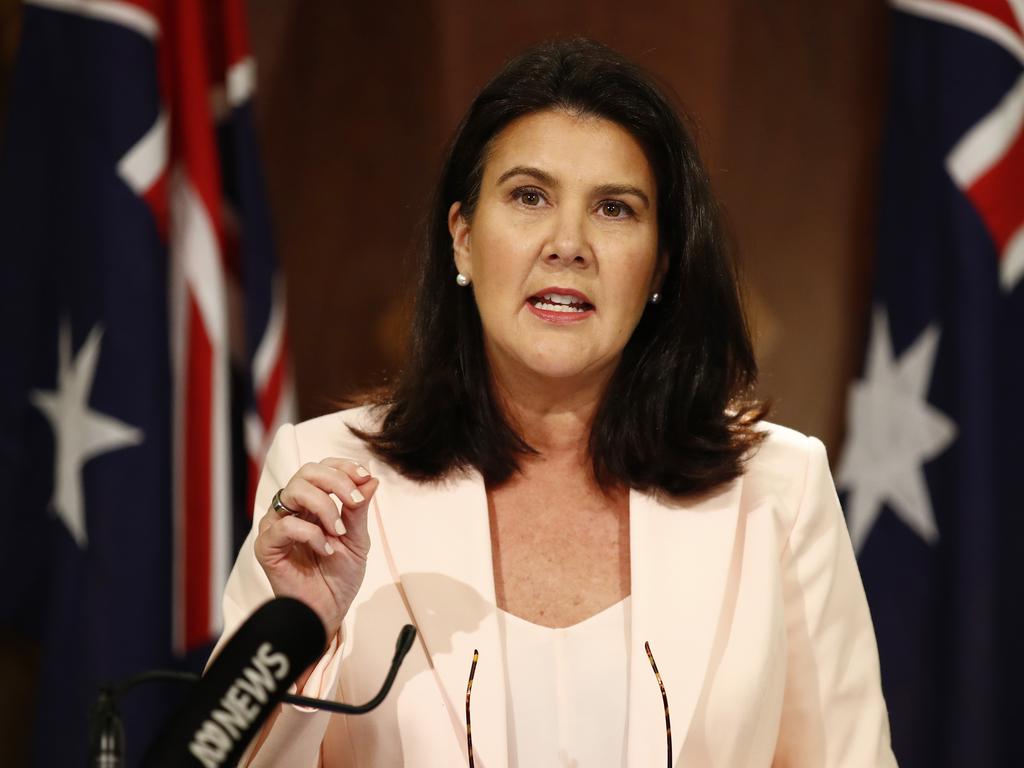
The government has insufficient political capital at this point to take on a well-organised and well-resourced opposition in the form of the superannuation industry. Had it been of a mind to do so, it would have needed to publicly air the arguments for halting the SGC rise many months ago — actually years ago — and to keep discussing them.
But apart from mentioning the short-term consideration — is this a good time in the economic cycle to be imposing a cost increase on employers? — the Morrison government sidestepped the issue.
The compelling arguments for cancelling any further increase to the SGC beyond the current 9.5 per cent have never been articulated by a senior minister, although they were covered in the Retirement Income Review commissioned by the Treasurer and released late last year. A number of backbenchers understand the issues well.
Arguably, missteps on this matter go back several years when the Abbott government in 2014 managed to rescind the (unlamented) mining super-profits tax introduced by Labor. A part of the Mining Tax Repeal Act was the deferral of any SGC increase to July 2021, with incremental increases from that date.
Why the government of the day didn’t opt to abandon any further rises at that point is unclear. The bill would probably still have passed, with the key Senate crossbenchers preoccupied at the time with seeing Wayne Swan’s School Kids Bonus extended.
Instead, a ticking time bomb was left, with the Morrison government requiring legislation to stop any further increases in the SGC. Mind you, such a move may have been voted down in the Senate, given the likely intense lobbying pressure on the crossbench senators from the superannuation industry. But it could have been worth a shot.
The SCG rate had never been legislated until Swan opted to include the rise to 12 per cent (it was to apply from 2019) in an act. He understood the political power of doing so. It would be up to the Coalition to unpick the rises.
So what are the arguments for maintaining the SGC at 9.5 per cent? And what are the consequences of the SGC now going to 12 per cent? One of the most perverse aspects of our compulsory super system is that it assumes one size fits all, when it’s obvious one size doesn’t fit all.
Low-paid workers are dudded, with the most likely result for them being to knock off their entitlement to the full age pension while forgoing current wages. This point has finally dawned on the Australian Council of Social Service, which has stated its opposition to any further increases.
To be sure, it’s a good deal for medium- to high-income earners, particularly those with uninterrupted work histories. But many of these individuals would have saved for retirement absent superannuation and never relied on the age pension. It is what economists call a deadweight loss, and the size of it is substantial given the generous (and highly regressive) tax concessions that apply to superannuation.
The idea that compulsory super is a saving for the taxpayer is a myth. The cost of the age pension might fall somewhat, but the cost of the tax concessions means super continues to be a net drain on the budget for decades to come. This is a point former prime minister Paul Keating, chief lobbyist for the superannuation industry, either doesn’t understand or refuses to acknowledge.
There is also the fact that, with a 9.5 per cent SGC, most retirees will have more than enough to live on, particularly given the availability of the means-tested age pension and other savings. This point was made in the Retirement Income Review, where it was demonstrated that a reasonable proportion of retirees die with their super assets intact.
Needless to say, this observation enraged the self-serving super funds which stand to gain additional fees and charges with the higher SGC rates. The Association of Superannuation Funds of Australia put out a series of misleading figures about the proportion of 70-year-olds with low or no balances, knowing full well these figures are the result of an immature system. During the next few years, the proportion of 70-year-olds with substantial balances will rise noticeably and there is every reason to think even more retirees will end up dying with large super balances.
The reality is the system of compulsory super, conceived of as short-term trade-off between wage rises and a super, has grown into a ravenous beast in which the funds are mainly interested in securing higher inflows of mandated contributions.
Unsurprisingly, these funds are inclined to throw their weight around in the knowledge they control a significant chunk of investment in Australia, and government regulation of the industry is largely a joke.
The government naively thinks it can tame the super funds by improving their accountability and encouraging them to merge (bigger beasts, anyone?). But the funds are not controlled by the members; the members are not even asked to elect the trustees. Is it any wonder that these funds often don’t act in the best interests of the members because there is really no way members can record their displeasure, save quitting the fund to join another one, which is likely to act similarly? Would members ever have endorsed a loss-making investment in a daily online newspaper? But, of course, they were never asked.
The utter failure of the government to prosecute the case for keeping the already generous SGC at 9.5 per cent does not bode well for the quality of policymaking in the near future.








It came as no surprise to learn the Morrison government has taken the coward’s way out and will not stand in the way of the compulsory superannuation contribution charge rising from this July, reaching 12 per cent in 2025.